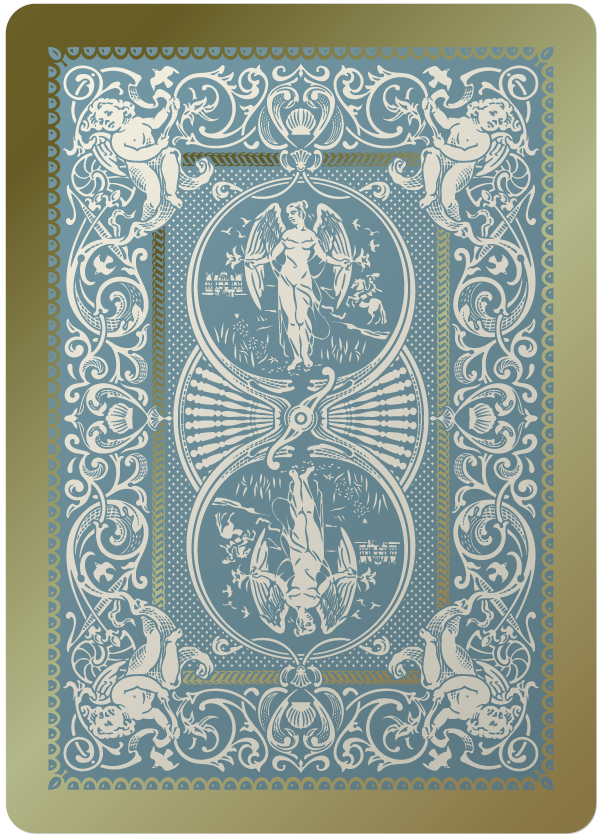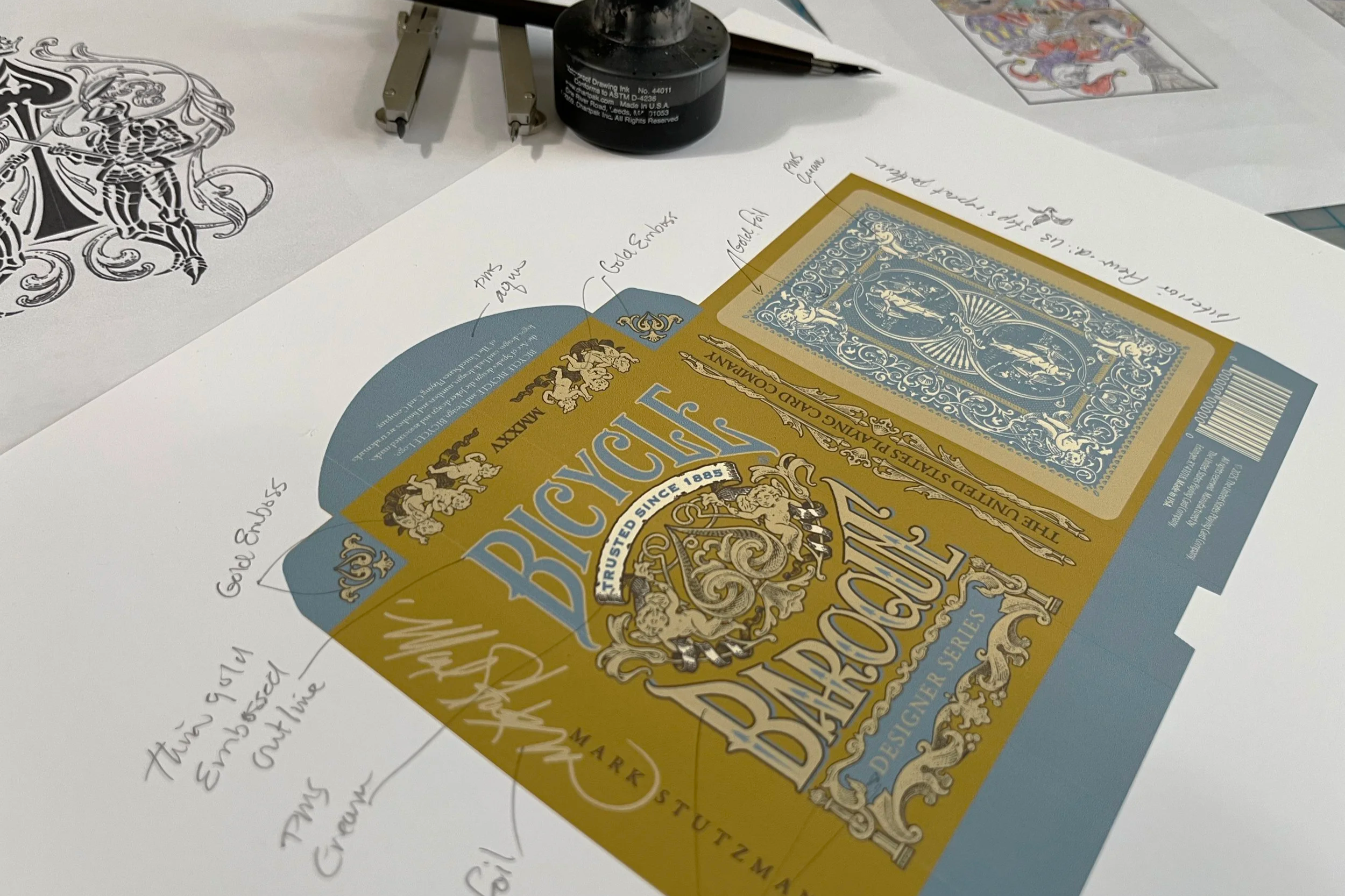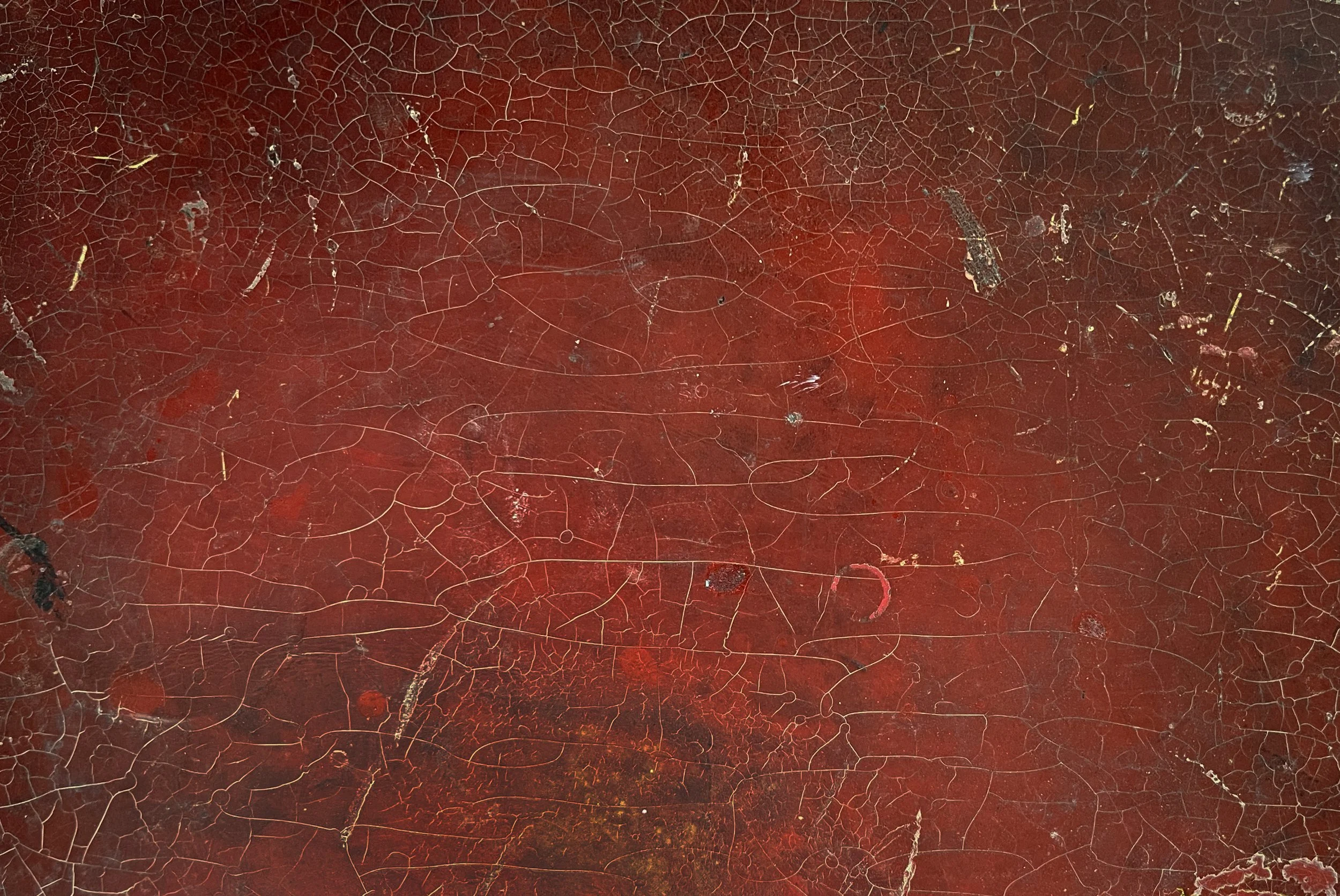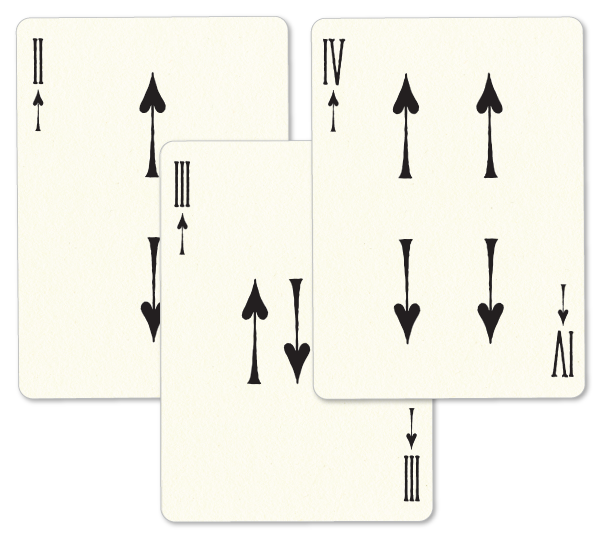
When Oppulence Was Expected.
The Baroque era gave rise to human excellence that remains unparalleled—Bicycle Baroque honors royal families whose indulgences became fertile ground for boundless artistic pursuits.
LIMITED TO 3,500 DECKS
The Baroque era was defined by grandeur, drama, and intricate ornamentation. Fueled by wealth and monarchies, commissioning art exemplified unbridled elitism.
Between 1600 and 1750, evolving reigns of power procured some of the most revered works of art, architecture, and music. The Bicycle Baroque deck pays tribute to this opulent movement.
Based on Bicycle’s classic Maiden Back design, the Bicycle Baroque back adopts a more ornate approach, reminiscent of 17th-century aesthetics.
Cold-foiled, lacey edges and an interior rope border add dimension, resembling a painted fresco ceiling.
Carefull Selections
The Bicycle Baroque tuck case features a unique gold-colored stock that USPCC has never used. It is printed with a light cream and powdery aqua blue. A matching gold foil is stamped flat and discriminantly embossed over select decorative elements to add shimmer and depth. (see rendered image above)
A step-and-repeat fleur-de-lis foil pattern adorns the inside of the box. But collectors – you have to open it to see it. And please do. These cards are designed for use.
The court cards are illustrated with ink and watercolor washes, and designed for two-way play. The Baroque courts aren’t restricted by the standard four solid colors most commonly used. Each court card is captioned and grouped by suit and monarchal regions of Europe. You can look up the cast of characters to learn about the symbolism used to represent them.
Four Courts and a Galleon.
The monarchies of England, which included Scotland and Ireland, France, Denmark, and Spain, grappled for power through the 17th century. For centuries, acquiring land and resources through marriage, political maneuvering, and acts of war led to uncertain times across Europe.
The Bicycle Baroque deck delves into this extraordinary era of power and pursuit, set against a rich backdrop of art, architecture, and music. Four monarchies contributed to the Baroque era by commissioning masterpieces to behold. Each court is identified, precipitating conversational game play.
IN PRODUCTION
Once the Bicycle Baroque deck is printed, the first 700 decks can be purchased in the MarkStutzman.cards shop, which will remain hidden until the product is available. The edition’s remaining decks will be available at Cardtopia.com. Search for the Designer Series Collection. This is a limited edition of 3,500.
Two Jokers join the royal court in matching frames and a two-way design – one filled with glea, one with sorrow. Make them part of your next game.
COME OUT AND PLAY!

Roman numerals appoint the numbered cards, with the two-facing, elongated suits against an ivory background. The rustic suits and clusters abandon standards adopted for contemporary play.
Background Painting
“Pan”
by Mark Stutzman

The Baroque aesthetic remains my favorite. Elaborate human forms, exotic patterns, contrasting textures, and awe-inspiring environments overload the senses.
If it ain’t Baroque, fix it!
— Mark Stutzman
LONELY KNIGHTS
Bicycle’s original Maiden Back design was numbered 813. As an homage to this timeless deck, adding “ISH” pays tribute to its origins.
Two clad knights lock swords inside the ace of spades and under the crown. Are they preparing for battle or marking a truce?
REPRESENTATION OF TAXATION
Each tuck is sealed with a crown tax stamp. Monarchs would have never passed up the opportunity to collect a tax. Unfortunately, like death, it is simply unavoidable.




















